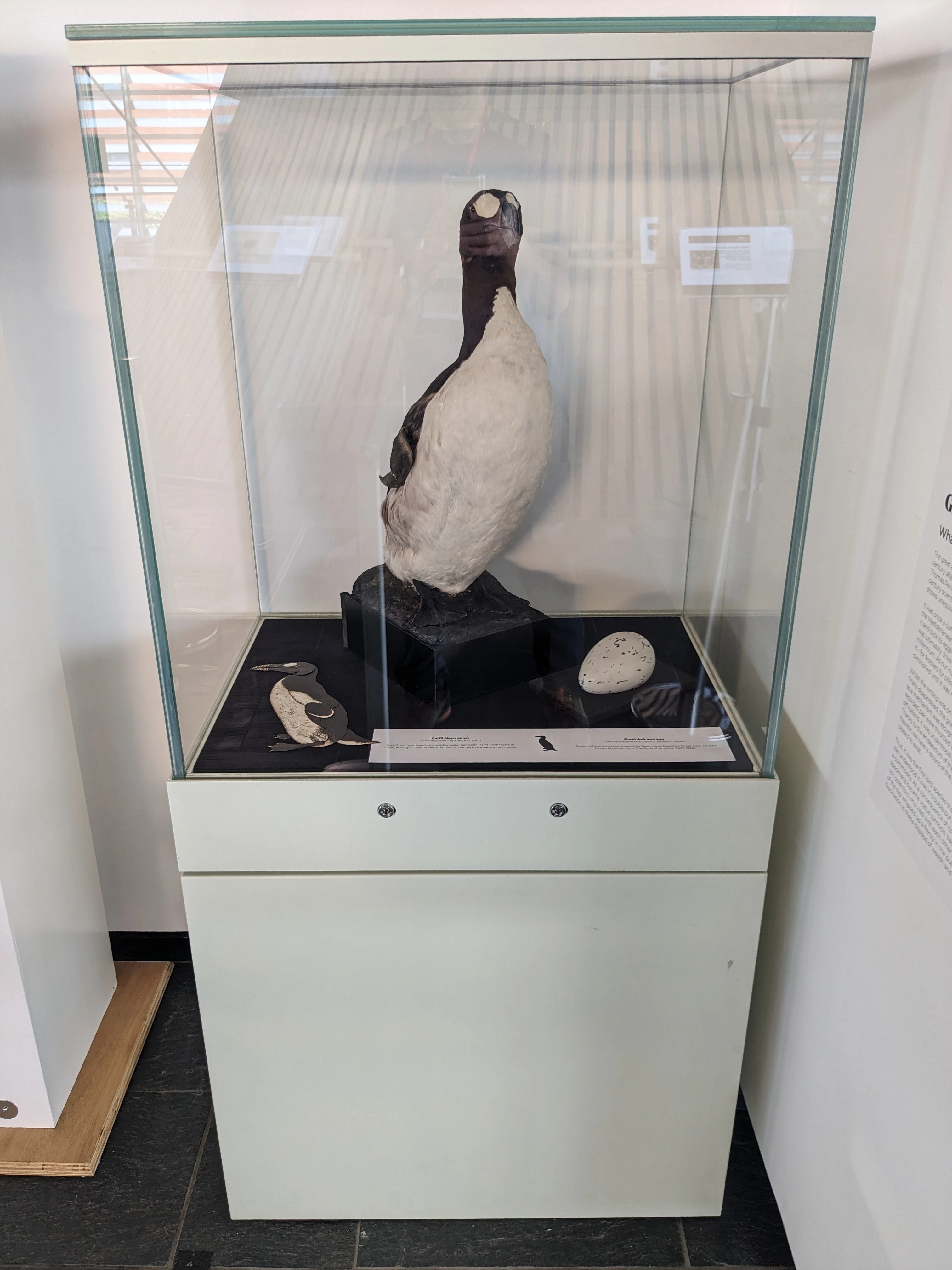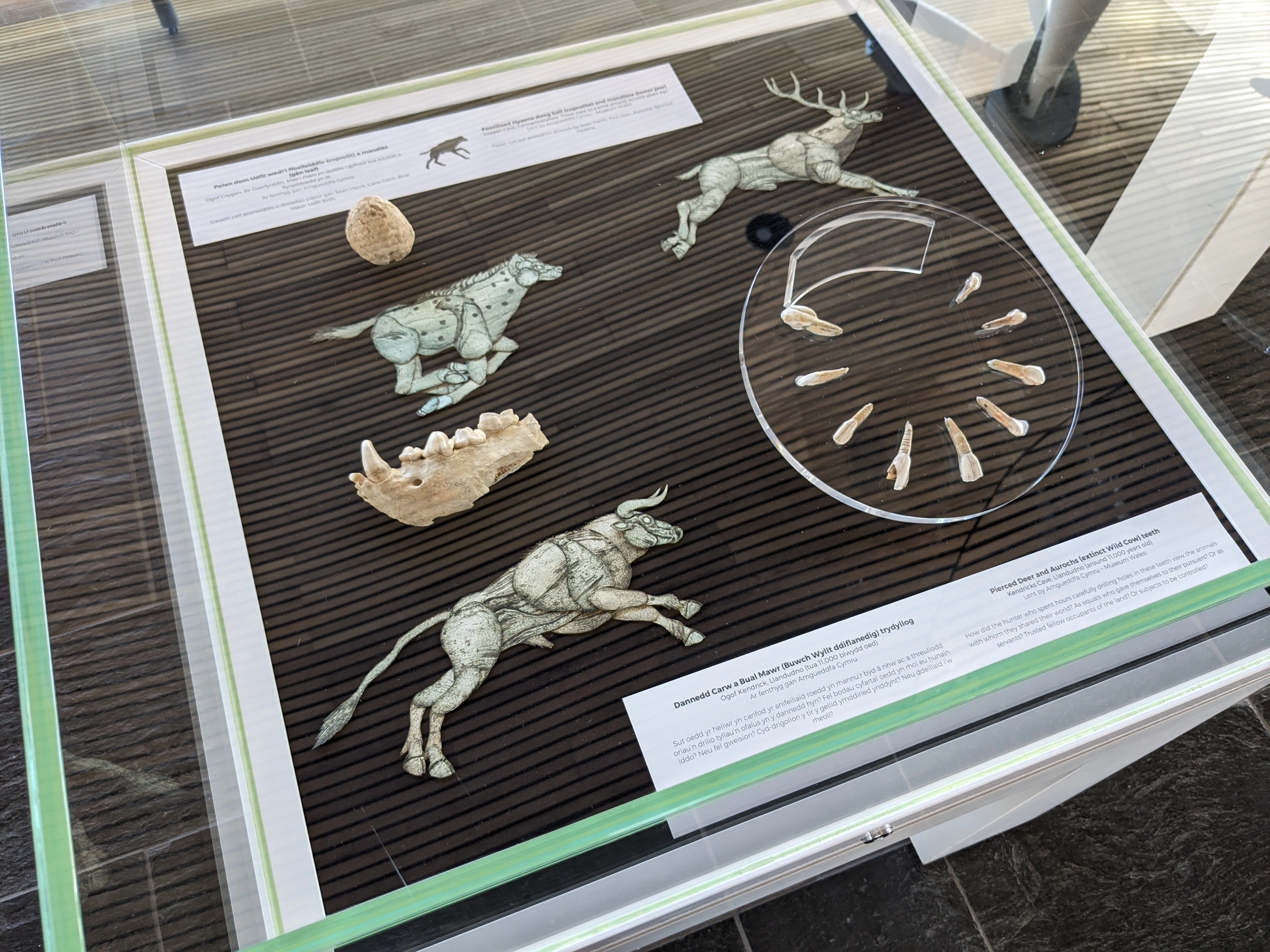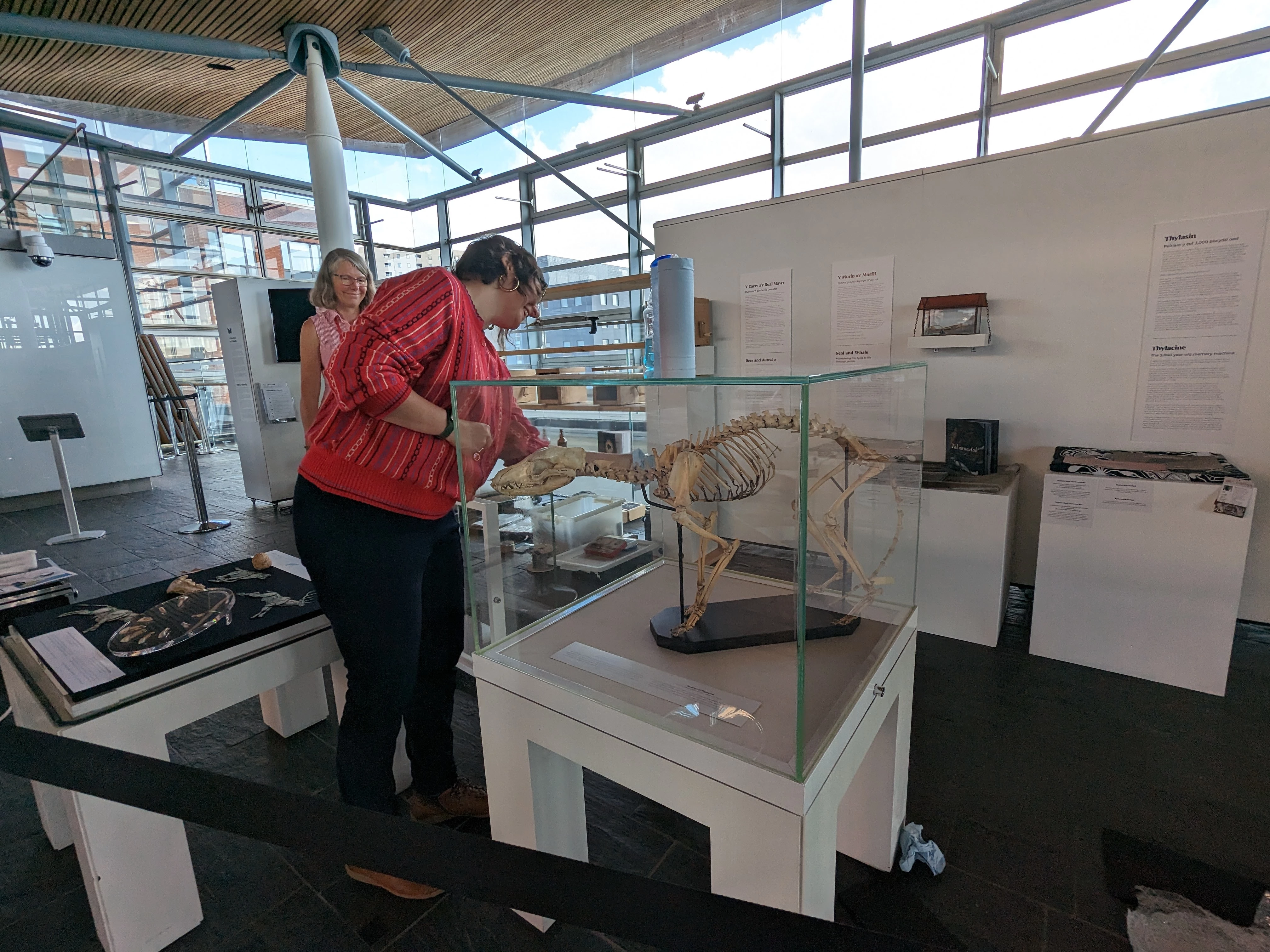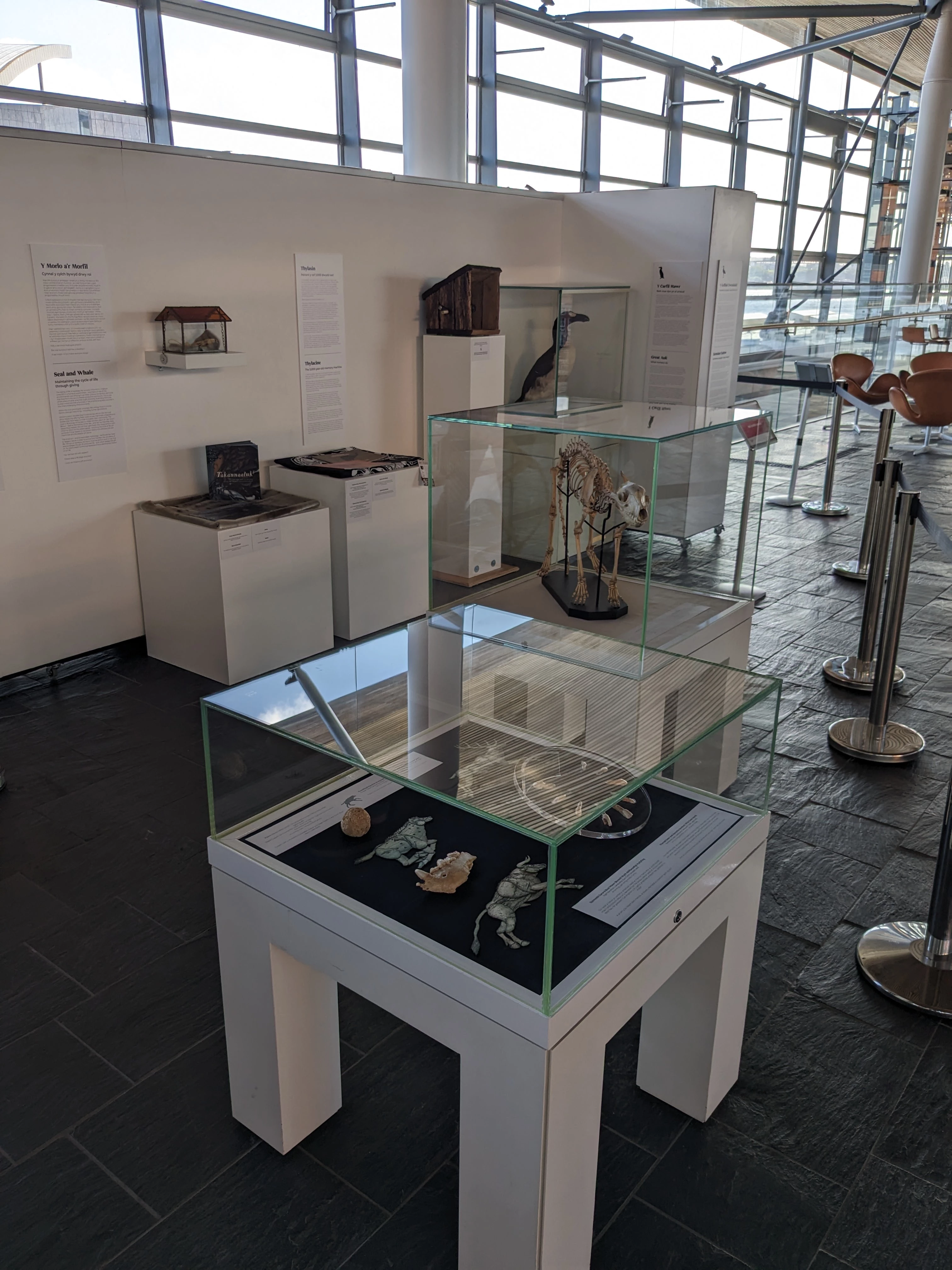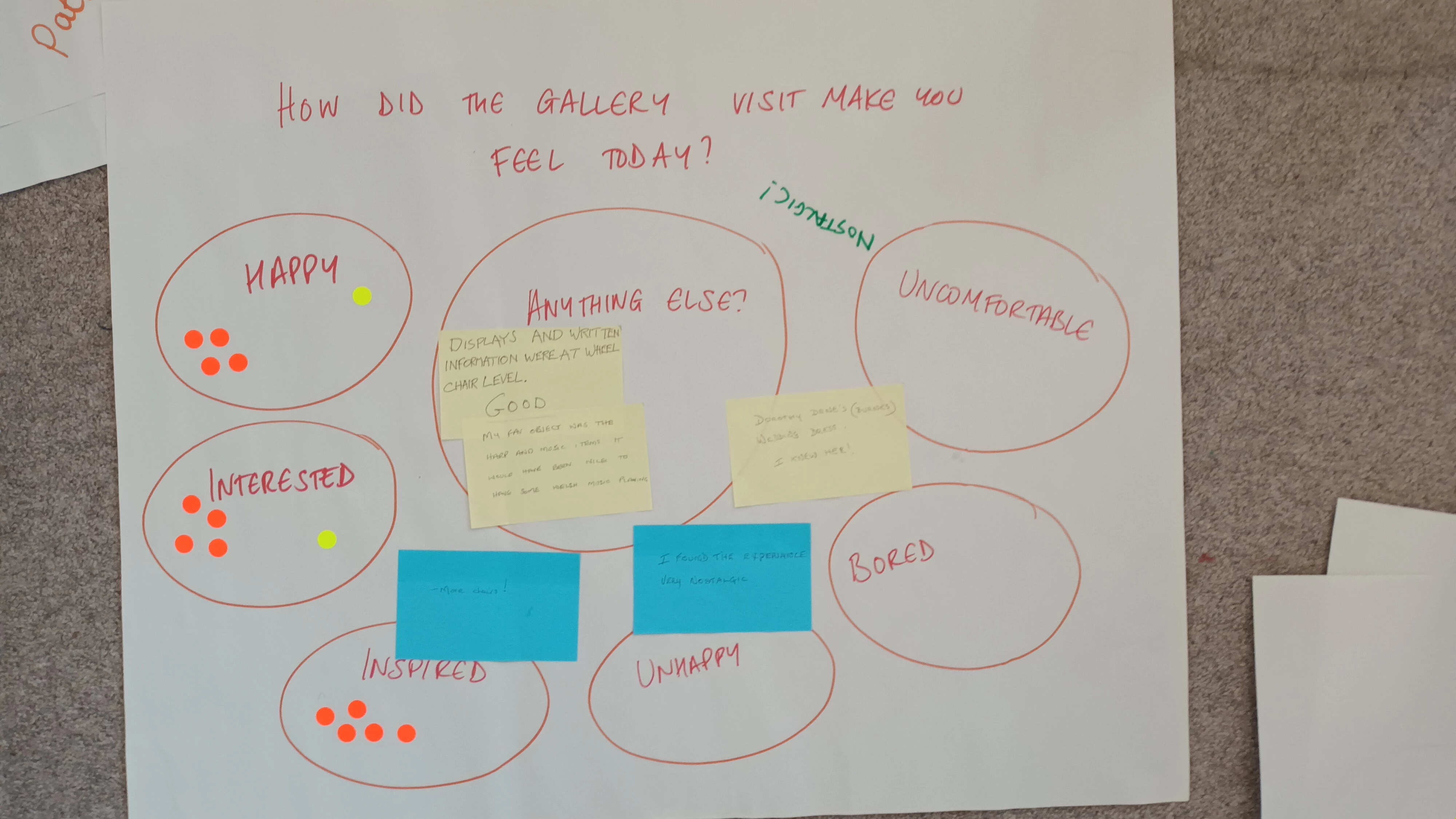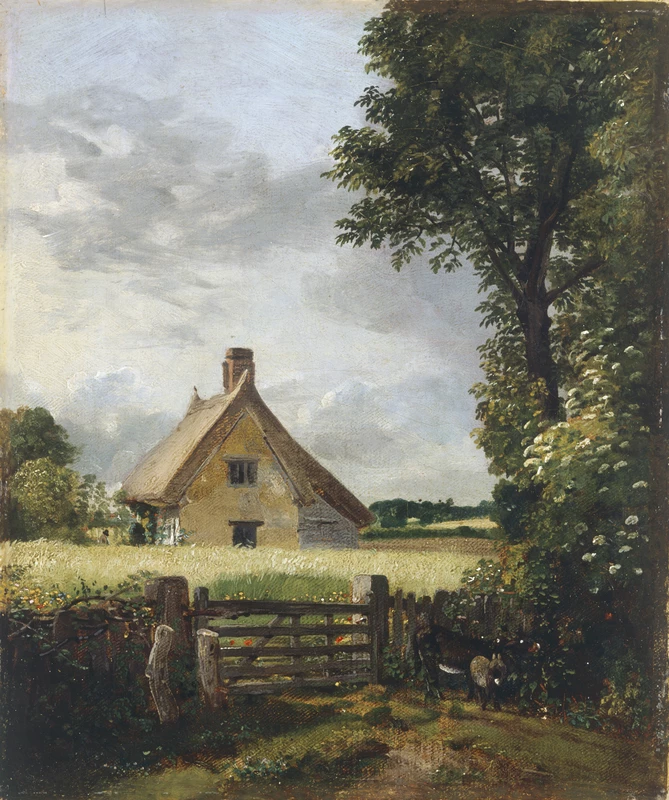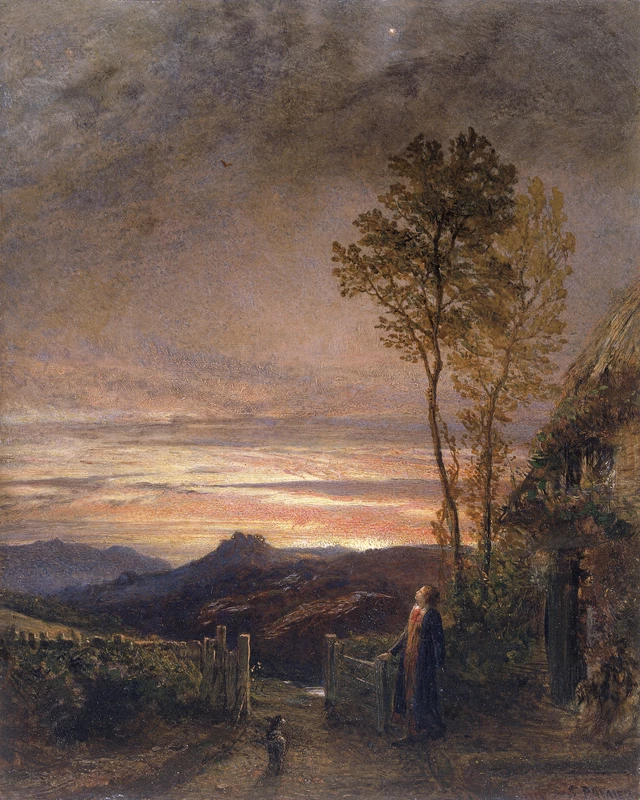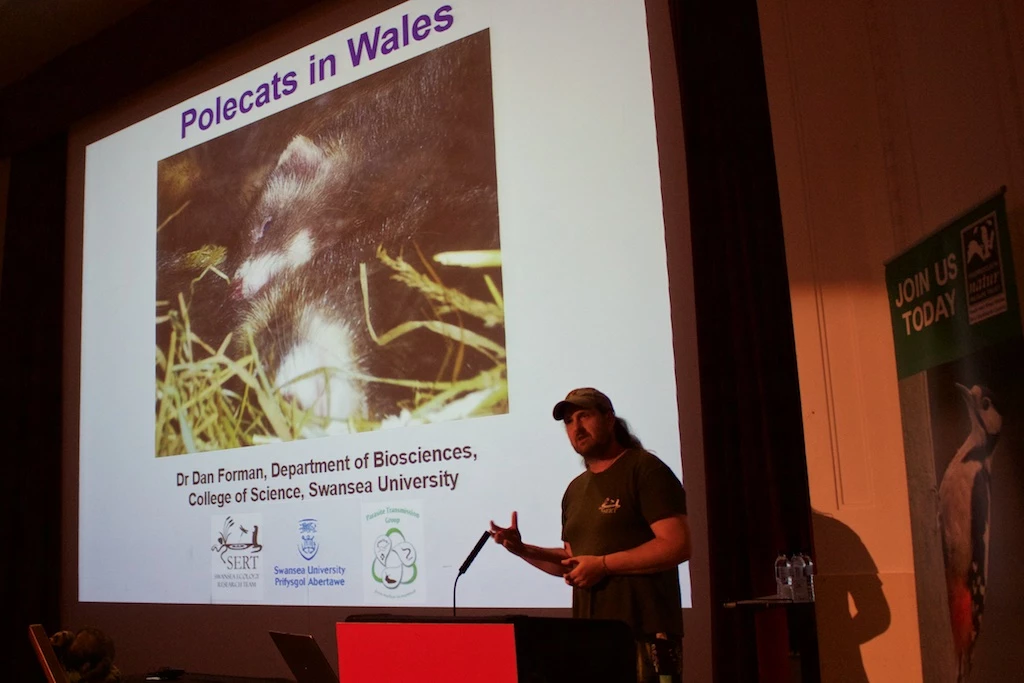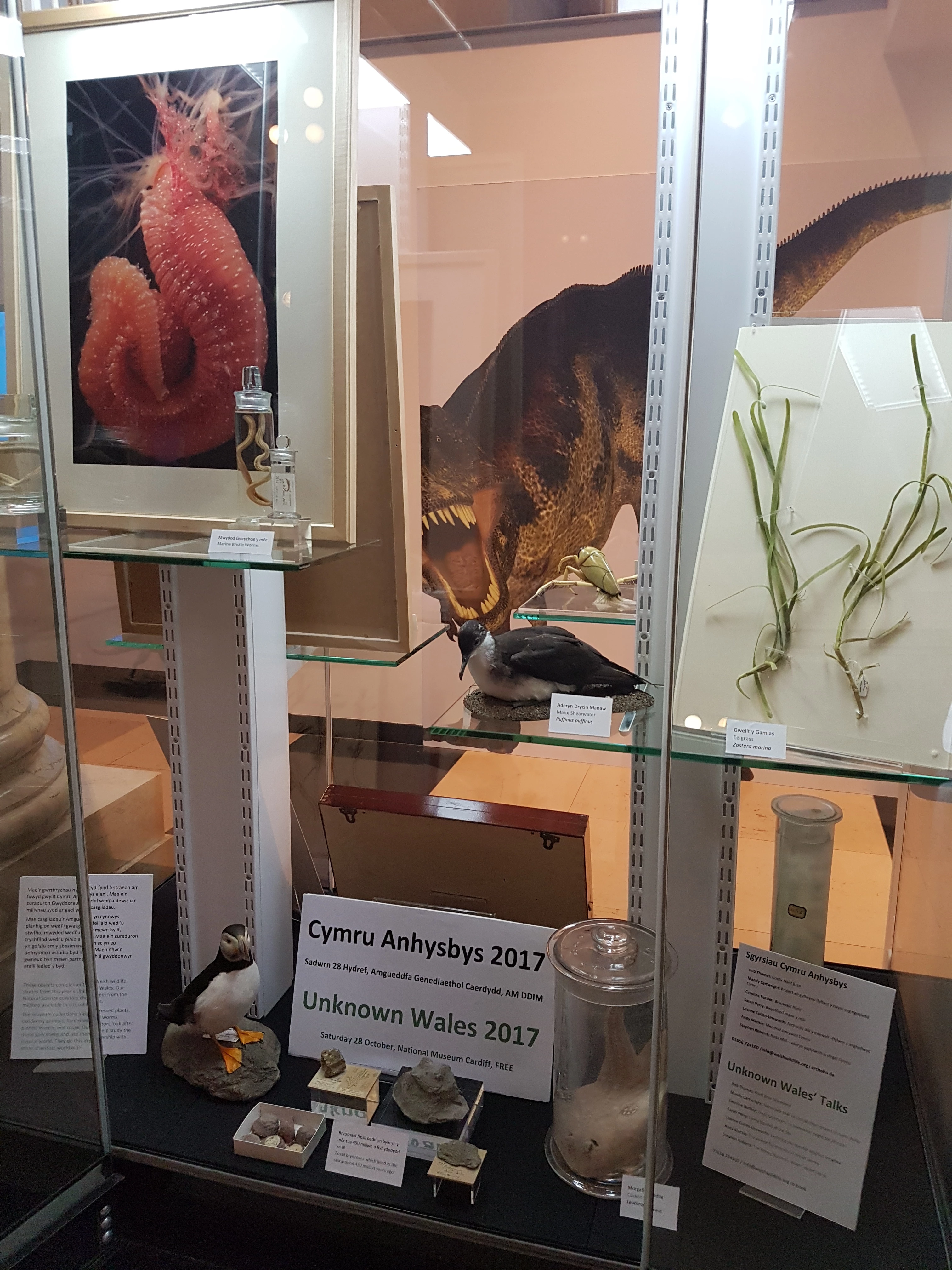Yn ddiweddar dyma Sain Ffagan, Amgueddfa Werin Cymru yn croesawu Memory Jar, grwp cymorth i bobl sydd wedi eu heffeithio gan ddementia yn y Bont-faen. Roedd yr ymweliad yn rhan o Amgueddfeydd yn Ysbrydoli Atgofion, project partneriaeth tair mlynedd rhwng Amgueddfa Cymru a Chymdeithas Alzheimer Cymru sy'n defnyddio amgueddfeydd, casgliadau ac adnoddau Amgueddfa Cymru i ddatblygu dulliau ymarferol o wella iechyd a lles pobl sydd wedi'u heffeithio gan ddementia.
Mae'r fenter bellach yn ei hail flwyddyn, ac un o'r amcanion yw datblygu rhaglen fwy cynhwysfawr a chynaliadwy o weithgareddau dementia gyfeillgar, yn ein hamgueddfeydd ac yn y gymuned. Rydyn ni wrthi'n datblygu a threialu gweithgareddau, ac yn gwahodd grwpiau cymunedol i gymryd rhan a lleisio'u barn. Bydd hyn, yn ei dro, yn helpu i lywio a datblygu ein adnoddau a'n rhaglen cyn lansio yn y Gwanwyn.
Yr ymweliad
Ar 9 Awst, ymunodd 29 o aelodau Memory Jar â ni ar daith drwy orielau Cymru... a Byw a Bod yn Sain Ffagan, cyn mwynhau te, coffi a theisen wrth drafod yr ymweliad. Dyma ni'n gofyn beth oedd y grŵp wedi'i fwynhau, ac am unrhyw awgrymiadau ar wella gweithgareddau yn y dyfodol.
Yn oriel Cymru... dyma'r grŵp yn cael eu tywys gan Gareth Rees (Arweinydd Llais Dementia, Amgueddfeydd yn Ysbrydoli Atgofion) a Loveday Williams (Uwch Swyddog Addysg, Cyfranogiad a Dehongli). Fe gyflwynodd Gareth a Loveday rai o'r gwrthrychau yn yr oriel, sydd wedi ei churadu i gyflwyno beth mae Cymru yn ei olygu i wahanol bobl, gan gynnwys Cymru ‘Amlddiwylliannol’, ‘Balch’, ‘Gwleidyddiaeth’ a ‘Gwrthdaro’.
Yn oriel Byw a Bod y tywysydd oedd Gareth Beech (Uwch Guradur Economi Wledig). Yn yr oriel hon mae gwrthrychau wedi'u curadu i ddangos gwahanol agweddau o fywyd yng Nghymru drwy'r canrifoedd, o gaffis i goginio, o fywyd gwledig i ddiwydiant, o wyliau i blentyndod. Un o'r gwrthrychau poblogaidd oedd ffwrn ffrio pysgod haearn bwrw Preston â Thomas, wnaeth danio nifer o atgofion yn y grŵp.
Ar ôl crwydro'r orielau dyma ni gyd yn dod at ein gilydd fel grŵp mawr. Yn ogystal â chael sgwrs gyffredinol, dyma ni'n gofyn i bob bwrdd ddefnyddio sticeri i roi eu barn ar gwestiwn penodol: ‘Sut oedd ymweld â'r oriel yn gwneud i chi deimlo heddiw?’ Darparodd y tîm dri opsiwn positif (Hapus, Diddordeb, Ysbrydoliaeth), a thri opsiwn negatif (Anhapus, Diflastod, Anghyfforddus) a lle i esbonio unrhyw deimladau ymhellach. Gallai pobl hefyd gynnig adborth drwy rannu eu hoff wrthrychau yn yr orielau gan ddefnyddio post-its, beiros a lluniau o rai o'r gwrthrychau. Dyma ni hefyd yn gofyn i'r grŵp beth wnaethon nhw ei fwynhau am yr ymweliad, ac ydyn nhw'n mwynhau amgueddfeydd yn gyffredinol?
Roedd yr adborth ar y cyfan yn bositif iawn – nifer yn dweud eu bod nhw wedi mwynhau, yn teimlo'n hapus, wedi eu hysbrydoli ac yn gweld y teithiau drwy'r orielau yn ddiddorol. Roedd eraill yn dweud eu bod nhw'n teimlo 'hiraeth' ac yn 'wladgarol'. Roedd rhai o'r gwrthrychau yn sbarduno sgyrsiau ac atgofion am fywyd teuluol, gan gynnwys hen fangl wnaeth atgoffa un fenyw o'i mam a'i mam-gu yn golchi dillad.
"Atgof hyfryd o'r gorffennol"
"Mae'n gwneud i fi feddwl pa mor agos mae fy atgofion, o ble dwi'n dod yn wreiddiol yn Swydd Efrog, a Chymru wedyn am dros 40 mlynedd. Dylai Cymru fod yn falch o'i thraddodiad a pharhau i groesawu eraill."
"Roedd yr arddangosiadau a'r wybodaeth ar lefel cadair olwyn. Da."
"Fy ffefryn oedd y delyn a'r gwrthrychau cerddoriaeth. Byddai clywed cerddoriaeth Gymraeg wedi bod yn braf."
"Roedd e'n brofiad llawn hiraeth."
"Mwy o gadeiriau!"
(Peth o'r adborth)
"Roedd y sgwrs yn byrlymu yn y bws yr holl ffordd nol i'r Bont-faen. Awyrgylch llawn hwyl a phobl yn mwynhau eu diwrnod mas. Nol yn Memory Jar, roedd cyfle i edrych ar ffotograffau o'r diwrnod a siarad am y pethau wnaethon ni eu cofio yn yr Amgueddfa. Roedd llawer o'r sylwadau positif yn sôn sut oedd pobl wedi'u sbarduno i fyfyrio ar eu hanes eu hunain, gan ennyn atgofion braf o'u gorffennol. Roedd un sylw yn gwneud y cyfan yn werth chweil: John, un o'r aelodau tawelaf, oedd y cyntaf i ymateb yn y drafodaeth grŵp. 'Dwi eisiau mynd eto!' meddai John gyda gwen fawr, gyda gweddill y grŵp i gyd yn cytuno."
(e-bost gan Colin, trefnydd Memory Jar, ar ôl yr ymweliad)
Diolch yn fawr
Mae'r tîm am ddiolch i Memory Jar am eu help gyda'r gwaith datblygu – roedd hi'n bleser eu tywys nhw drwy'r orielau a chlywed eu barn ar sut i wneud ein hamgueddfeydd yn fwy dementia gyfeillgar yn y dyfodol. Hoffen ni ddiolch hefyd i Glwb Rotary y Bont-faen am ddarparu cludiant, ac i Gronfa Gymunedol y Loteri Genedlaethol am eu cefnogaeth hael i broject Amgueddfeydd yn Ysbrydoli Atgofion.
Roedd ymweliad grŵp Memory Jar yn gyfle gwerthfawr i'r tîm gael blas o sut fydd ein harlwy yn effeithio ar y gymuned. Roedd yr ymateb brwdfrydig a'r adborth positif yn dangos fod gan dreftadaeth rôl bwysig i chwarae ym mywydau pobl sydd wedi'u heffeithio gan ddementia. Wrth i'r gwaith o brofi a datblygu ein harlwy ar draws ein saith amgueddfa barhau dros y misoedd nesaf, rydyn ni'n edrych ymlaen at weithio eto gyda Memory Jar a grwpiau ac unigolion eraill ar draws Cymru.
Cysylltwch â ni
Am ragor o wybodaeth, gallwch chi gysylltu â'r tîm drwy e-bostio mims@amgueddfacymru.ac.uk neu drwy ffonio (029) 2057 3418. Gallwch chi hefyd gofrestru i dderbyn ein cylchlythyr chwarterol yn yr un modd.
